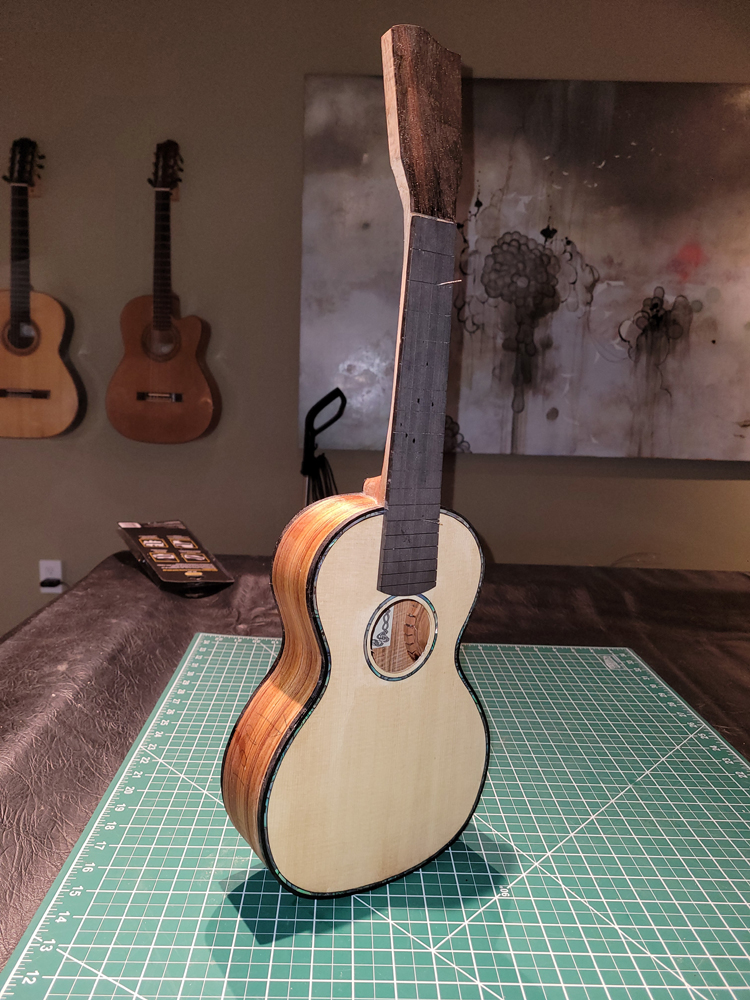I now have the ukulele bound but there were some steps along the way to get there.
Working with a traditional build method having the neck aligned with the top is really easy. they are glued early in the process when one can see and align on a centerline.
Care still needs to be taken at the end of the instrument when the rims are glued to the top. Still with the traditional process it is done at a time where every thing is visible. It still felt good after the box was closed and the fretboard placed that it all still lined up

Before binding I rough carved the neck so that I could check out the heel profile. I mostly used a spoke shave and rasp to taper the neck and a bit of rough carving to blend it in with the heel.


I pulled out the side bender and bent 4 ebony binding strips. I got a whole bundle of binding cutoff for free from Gurian Instruments. It is nice to live nearby. I bent these with no water. Started bending around 230° finished and let cook for 10 minutes at 280°


I used a fleishman side binding machine with an LMI bit and bearing to cut the side channel. The binding are a bit tall for the ukulele so I will leave them about 1 mm proud. That depths works out perfect as my nylon strip and black purfling are about 1 mm taller than the shell I am installing.

Here is the plan

but I will glue it with the nylon strip instead of the shell.


What follows is the downside of a traditional build; all of the binding and purfling work neck the neck has to be done by hand. It is especially important to not nick the heel cheeks as they are visible.

I use the template to mark out the binding channel with a scalpel, cut the waste out using chisels. With the binding fitting I cut the purfling channel. I mark with a scalpel and clear with a chisel.

I clear from the top with a 2 mm chisel; I also use a wide chisel to mark out the continuation of the binding channel

Bit by bit I make the stack fit under the fretboard.

With all of that in place it was easy to just glue in the binding one side at a time.

While the one side was curing I flipped the ukulele over and started working on the back. Originally I cut inlets into the heel for the binding.

I decided I did not like how it went together. The back color was to close to the mahogany. The three strips of ebony just looked disjointed to me. Ok from the back, but bad from the side.


Ultimately I cut the heel back to the binding line and glued on a ebony button to tie it altogether.


While waiting on the second side binding strip I installed the abalone in the first side. I have bunches of little curved and straight segments that I break in one at a time and pushed down with a small hex wrench. Because of the natural pattern all the break marks are pretty well masked.
The fretboard is just sitting on the top I wanted to see how it looked.


The second side just after I installed and flooded with CA, before scraping flat. The pearl is flush with the top and the binding and purfling are proud.

After some scraping

Starting to look like a ukulele.



























































